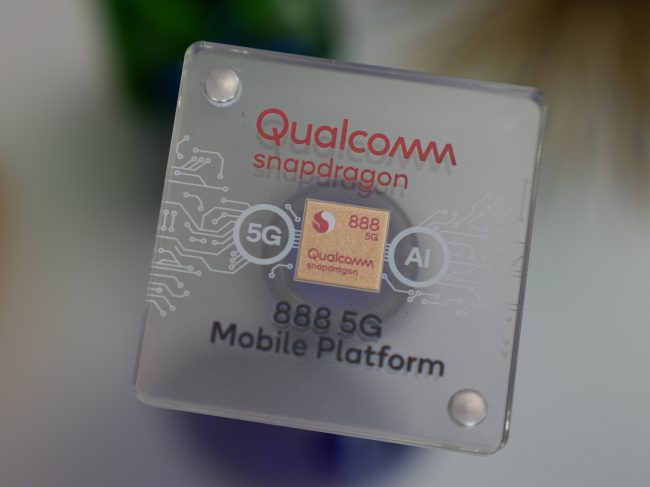Today kicked off the annual Qualcomm Snapdragon Summit, held virtually this year instead of in Maui, of course. As is usual at this event, their latest chipset was announced; we will now have the Qualcomm Snapdragon 888 5G mobile platform to look forward to in next year’s high-end Android devices.

Photos courtesy of MJ.
Qualcomm builds the technology that powers our mobile devices, giving our smartphones the ability to take the best advantage of what 5G speeds offer and the AI they utilize; we see the results in things like better gaming experiences and even how well our smartphone cameras work. We won’t have all of the details on the new Snapdragon 888 mobile platform until tomorrow. Still, Qualcomm gave us a teaser today about how their 888 mobile platform’s performance capabilities will feature prominently in the quality of photos that the next generation flagship cameras will provide.
With the faster gigapixel speed Qualcomm Spectra ISP, users can capture photos and videos at 2.7 gigapixels per second or roughly 120 photos at 12MP resolution—up to 35% faster than the previous generation.
Even though 2020 has been a trying year (in every way), Qualcomm has stayed focused on making 5G experiences as powerful as possible by pairing the Snapdragon 888 with their latest 3rd generation Snapdragon X60 modem. The X60 will offer mmWave and sub-6 5G across all major bands worldwide, and it will also support 5G “carrier aggregation, global multi-SIM, stand-alone, non-standalone, and Dynamic Spectrum Sharing.”
If all of this sounds like gobbledygook to you, that’s okay. Basically, we can expect the chipset to work worldwide on all 5G bands. Carrier aggregation means that the chipset will efficiently combine more than one carrier — on the same or different 5G bands — to increase your device’s capacity for the highest bandwidth speeds. Seamless multi-SIM use will, of course, be supported globally. Stand alone 5G networks are built specifically for 5G (they do not use existing 4G infrastructure and are even more expensive to implement). In comparison, non-standalone 5G networks are built on the existing 4G/LTE infrastructure. Here’s a great example of what Dynamic Spectrum Sharing means:
Qualcomm’s Dean Brenner, senior vice president of spectrum strategy and technology policy, said Dynamic Spectrum Sharing “accelerates and expands the 5G roll out instantly because we don’t have to do re-farming. We can immediately get 5G deployed into the legacy 4G bands.” In terms of using DSS to get from non-standalone to standalone 5G, “DSS is a very important bridge to get there. DSS is pushing 5G coverage out as expansively as possible. So that means when the 5G core is launched, you’re already going to have this very, very broad 5G coverage. If you didn’t have DSS, you have kind of two problems–you have to get to the 5G standalone core but you also have to get 5G built out.”
Qualcomm’s latest 6th generation AI Engine has a completely re-engineered Hexagon processor, which they say “takes a pivotal leap forward in AI compared to the previous generation to improve performance, power efficiency—all at an astonishing 26 tera operations per second (TOPS). The platform is further enhanced by the 2nd generation Qualcomm Sensing Hub, which incorporates lower-power always-on AI processing for intuitive, intelligent features.” You can expect a huge upgrade in gaming performance, as well.
Since its inception, Qualcomm Snapdragon Elite Gaming has delivered dozens of mobile-first technologies to smartphones, including Updateable GPU Drivers, Desktop Forward Rendering, and frame rates achieving up to 144 frames per second (fps). The 3rd generation of Snapdragon Elite Gaming featured in Snapdragon 888 delivers Qualcomm Technologies’ most significant upgrade in Qualcomm Adreno GPU performance.
We now know that the new Snapdragon 888 mobile platform will replace the previous top-of-the-line System on a Chip (SoC), Snapdragon 865, as Qualcomm’s flagship. You can expect to see the Snapdragon 888 mobile chipset in Xiaomi’s upcoming Mi 11 flagship as one of the first to feature it, with new releases from other brands including ASUS, Black Shark, Lenovo, LG, Meizu, Motorola, Nubia, realm, OnePlus, OPPO, Sharp, Vivo, Xiaomi, ZTE, and likely Samsung following, as their 2021 models are announced.
You can watch a livestream of the Day One Keynote here.
via Qualcomm
